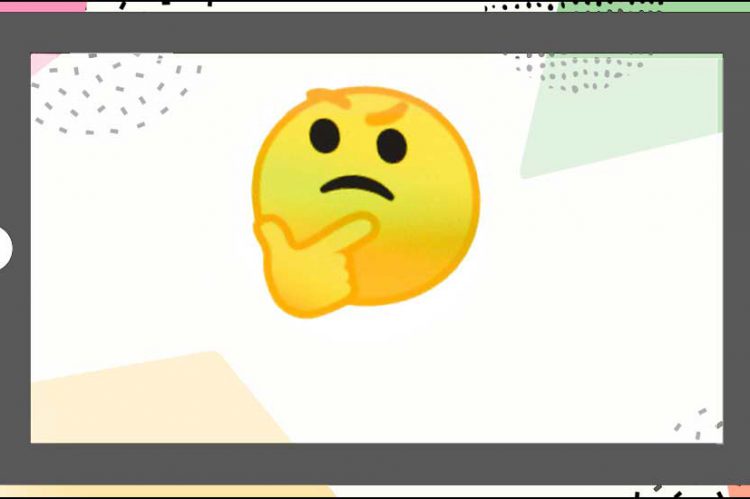We’re all familiar with emoticons, those typed representations of emotions, animals, and even Santa Claus. *<|:‑)
I understand that. It’s pretty simple.
In recent years, the emoticon has mostly been replaced by emoji — pictures or graphics that represent emotions, animals, Santa, food, travel, activities, objects, flags, and 3,600 other things.

Today’s mobile devices have a keyboard filled with emoji, and more are being added every year by Unicode.
Emoji are available for use in the D2L Brightspace Editor. Click the plus (+) sign on the upper-level icons, select Emoji from the menu, and then make your selection(s).
Sean Peek of Business.com explains that emoji are useful and can help with context, especially when working with Millennials. But use them with caution.
“Before using emojis, make sure you know your audience’s demographic. For instance, older people may be uncomfortable with emojis or may not even know what they mean.”
Good advice. After I learn how to set the clock on my VCR, I’ll become more comfortable using emoji on my Jitterbug flip phone.
Read Sean Peek’s Story: Put a Smiley on It: Should You Use Emojis in Business Communication? (business.com)
The Emoji Problem
Type a few emoji in a row to make a statement, a sentence, or a perhaps a baffling series of pictures that are open to interpretation.
Three whale emoji in a row could be mean “well, well, well.” Or maybe it means you really, really like whales. A single whale could mean “something big.” But sometimes a whale is just a whale.
And don’t confuse a whale with a spouting whale. That’s completely different.

Even worse, each vendor makes emoji in their own style. Is it an emoji of a badger or a panda? And if it is a badger, is that a good thing or a bad thing?
And why does nearly every emoji of chocolate ice cream have a smiling face with eyes? Vanilla ice cream doesn’t have a face. It doesn’t need a face. It’s ice cream!
The Emoji Translator
If only there was a way to translate what seems like a random string of emoji images and convert them into words. Well (🐋), the internet has a solution for everything. Copy those cryptic images and paste them into the emoji translate website.
Translate English to emoji, emoji to English, or choose from about 100 languages. The results are ¯\_(ツ)_/¯.
Okay, it’s not the greatest translator, but it’s better than nothing.
Copy an Emoji Phrase
The website emojicombos.com lets you search for emoji, string some together, and copy them for use in your tweets, reports, letters, and emails. It also has some useful (and some less useful) emoji phrases ready to be copied, for example, 👁🐝🍃🐑. The combined emoji images of eyeball, bee, leaves, and ewe translate to “I believe in you.”
That’s a nice message for someone, unless they thought it said, “see bee plant sheep.”
I think I’ll ignore emoji for a while and just stick with a simple smiley face.

Fun Emoji Facts
2021 statistics from the Unicode Consortium
- 92% of the world’s online population use emoji.
- Tears of Joy face was the most used emoji.
- Red Heart emoji ranked a close second.
- Rolling On Floor Laughing face was third.
- Flexed Biceps was the top body parts emoji, which is in a different category than the much more popular hands category.
- Flags is the least popular category.
Resources
Thomas Heller’s Emoji Language Reference Grammar (tmh.conlang.org)
13 Emoji Phrases That You Should Be Using More Often (buzzfeed.com)
This Emoji Test Will Reveal Your Dominant Personality Trait (buzzfeed.com)
Is this story an April Fools’ joke?


